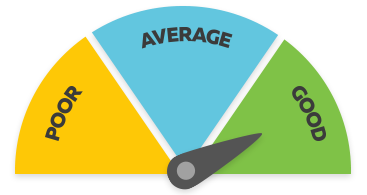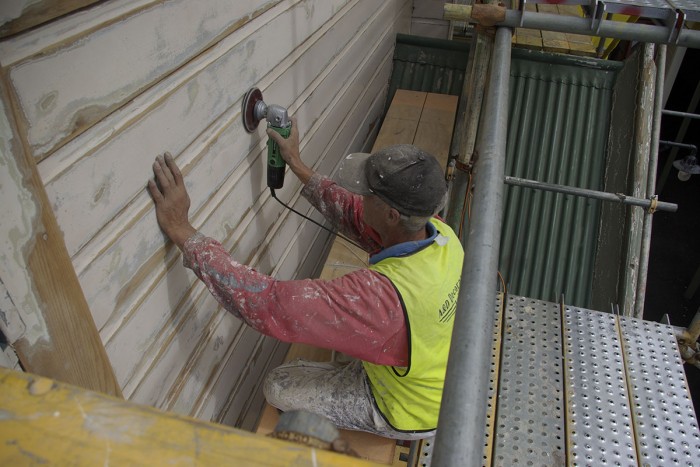Painter and Decorator
Kaipeita/Kaiwhakapaipai Whare
Alternative titles for this job
Painters and decorators apply decorative and protective finishes to interior and exterior walls, doors, windows and other surfaces of buildings.
Pay
Experienced and qualified painters and decorators can earn
$53K-$76K per year
Source: Seek and Trade Me, 2023
Job opportunities
Pay
Pay for painters and decorators varies depending on skills, experience and their employer.
- Apprentice painters and decorators may start on the training minimum wage or adult minimum wage, with their pay increasing as they gain experience and unit standards.
- Painters and decorators can earn between $53,000 and $76,000 a year.
Painters and decorators running their own business may earn more, but their income will depend on the success of their business.
Sources: Seek, 2023; and Trade Me Jobs, 2023.
- PAYE.net.nz website - use this calculator to convert pay and salary information
- Employment New Zealand website - information about minimum wage rates
(This information is a guide only. Find out more about the sources of our pay information)
What you will do
Painters and decorators may do some or all of the following:
- work with customers on colour selection and finishes
- calculate materials required for a job
- erect scaffolding under five metres high (scaffolding over this height must be put up by a registered scaffolder)
- fill holes, cracks and joins, and clean surfaces of dust and dirt
- mix and match paint colours
- cut and hang wallpaper, vinyl and backing paper
- apply paint and decorative paint finishes such as glazing, graining, marbling and lettering.
Skills and knowledge
Painters and decorators need to have:
- a good understanding of colour
- knowledge of paints and wall coverings
- skill in painting and decorating techniques
- knowledge of health and safety precautions.
Painters and decorators who are self-employed also need business skills.
Working conditions
Painters and decorators:
- usually work regular business hours, but may be required to work longer hours or weekends. Commercial painters and decorators may work at night
- work on homes and commercial buildings that are being built or renovated
- may work in cold or dusty conditions, inside and outside and at heights.
What's the job really like?
Painter and decorator video
Find out about a career in painting and decorating – 1.27 mins. (Video courtesy of the Building and Construction Industry Training Organisation)
A painting apprenticeship takes around three years to complete and in that time you’ll learn a wide range of skills both on the job and off-site. You’ll learn the basics of preparation, filling and sanding before getting into painting, cutting-in and rolling. As time progresses you can learn further skills and be able to guide customers on the best type of paint and finish to suit their requirements.
Good skills to have include being a good listener, an eye for detail and steady hands as well as good maths and English skills. This profession can suit people who enjoy art and design. It’s rewarding work that is both inside and outside based.
Becoming qualified is a great way of providing assurance to your customers that you know what you’re doing. Careers can progress into supervisor, quoting, working in design to running your own business. It’s also a great qualification to be able to travel with.
If you’ve already been working in the trade for some time, or if you’ve been trained and worked professionally overseas, BCITO offers excellent opportunities to recognise your skills and get qualified. Being qualified provides assurance that you know what you’re doing and the painting is done to a professional standard.
Check if you’re eligible. Getting qualified could be fees-free.
Entry requirements
There are no specific requirements to become a painter and decorator.
However, you usually need to complete an apprenticeship and gain a National Certificate in Painting and Decorating (Level 4). The Building and Construction Industry Training Organisation (BCITO) oversees painting and decorating apprenticeships.
- Building and Construction Industry Training Organisation (BCITO) website - apprenticeships
- More information about apprenticeships
Secondary education
There are no specific secondary education requirements to become a painter and decorator. However, construction and mechanical technologies, maths, design and visual communication, and painting are useful.
Year 11 and 12 learners can find out more about the construction industry and gain relevant skills by doing a National Certificate in Building, Construction and Allied Trades (Levels 1 and 2) through the BConstructive programme.
For Year 11 to 13 learners, trades academies and the STAR and Gateway programmes are good ways to gain relevant experience and skills.
These programmes may help you gain an apprenticeship, but do not reduce the amount of time it takes to complete it.
Personal requirements
Painters and decorators need to be:
- detail-focused, with an eye for colour
- practical, quick and accurate
- neat and tidy in their work
- organised
- responsible
- good at relating to people
- able to work as part of a team.
Useful experience
Useful experience for painters and decorators includes:
- interior decorating
- work as a sales assistant in a paint and wallpaper shop
- work as a painter's assistant
- any other work where you can demonstrate creativity.
Physical requirements
Painters and decorators need to:
- have good eyesight (with or without corrective lenses) and normal colour vision
- be reasonably fit and have a strong back and knees, as their work involves a lot of bending, standing and lifting
- be comfortable working at heights
- have good hand-eye co-ordination.
Find out more about training
- Building and Construction Industry Training Organisation (BCITO)
- 04 381 6430 - info@bcito.org.nz - www.bcito.org.nz
- Master Painters New Zealand
- 04 472 5870 - nationaloffice@masterpainters.org.nz - www.masterpainters.co.nz
What are the chances of getting a job?
Strong demand for painters and decorators
Chances of getting work as a painter and decorator are good due to:
- regular redecoration by homeowners
- steady growth in construction which is predicted to continue until at least 2023
- a shortage in the number of people going into painting and decorating apprenticeships.
The demand for painters and decorators can be affected by economic conditions. A downturn in the economy can lower demand for painters and decorators, although there is often maintenance work available.
According to the Census, 12,297 painters and decorators worked in New Zealand in 2018.
Most painters and decorators work for small firms or are self-employed
Most painters and decorators work in small firms, and about one third are self-employed. Some self-employed painters and decorators work on contracts in pairs or small teams.
Sources
- BCITO, 'Painting and Decorating', accessed July 2018, (www.bcito.org.nz).
- Miller, B, chief executive, Master Painters New Zealand, careers.govt.nz interview, July 2018.
- Ministry of Business, Innovation and Employment, 'National Construction Pipeline Report 2018', July 2018, (www.mbie.govt.nz).
- Ranchhod, S, 'Construction Bulletin - July 2018', July 2018, (www.westpac.co.nz).
- Stats NZ, '2018 Census Data', 2019.
(This information is a guide only. Find out more about the sources of our job opportunities information)
Progression and specialisations
Painters and decorators may progress to set up their own businesses, or move into supervisor or management roles.
Painters and decorators may specialise in:
- commercial or residential work
- interior or exterior painting
- wallpapering
- decorative or maintenance work.
Last updated 9 December 2024


